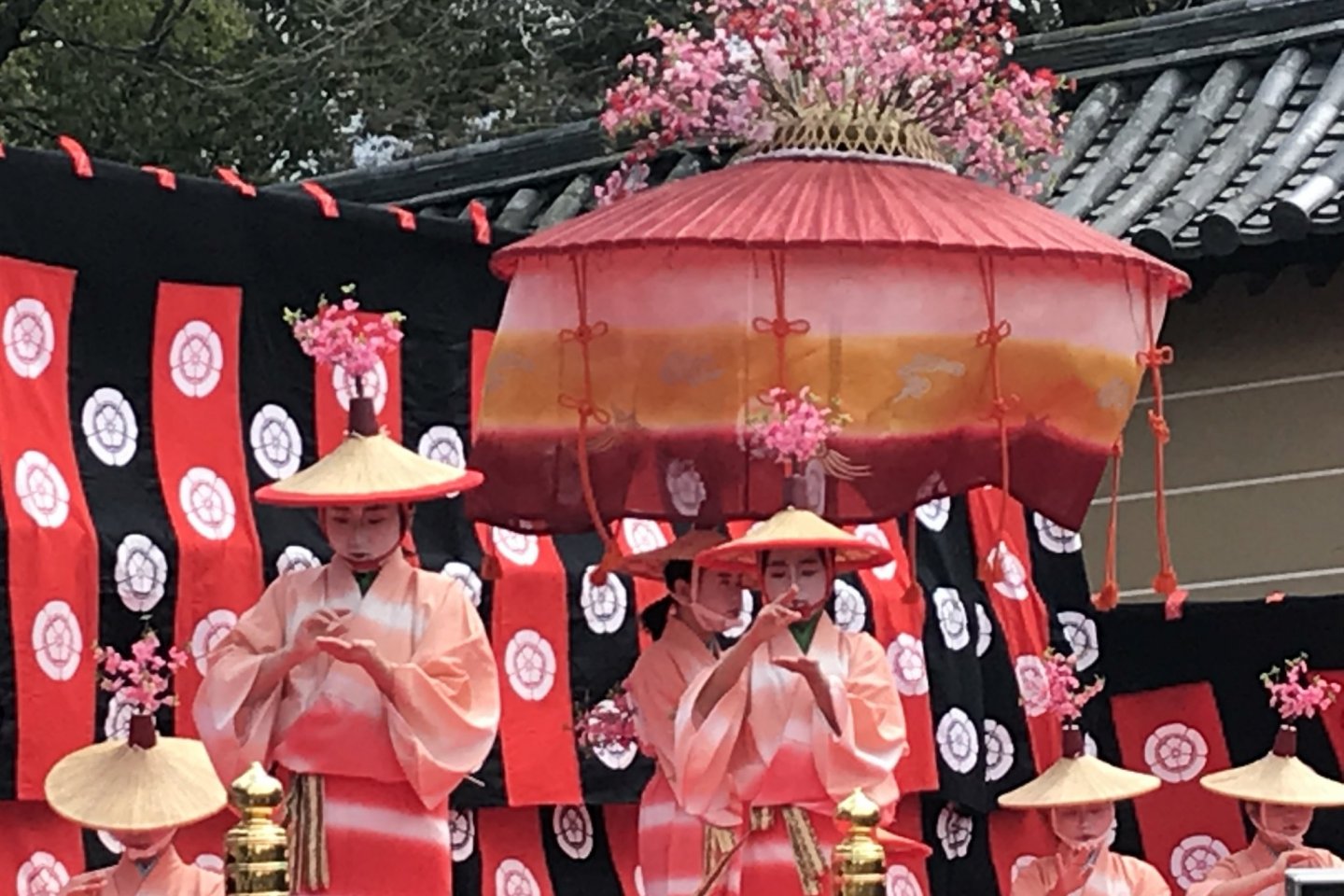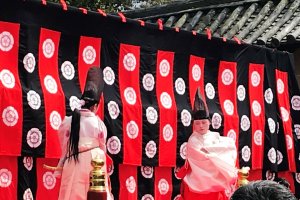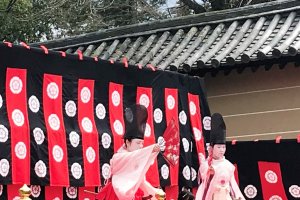Hanezu refers to the pinky plum blossom color. The pink is so surreal in the paintings, it is other worldly, almost referring to some Buddhist paradise filled with angelic beings. What is it about the pursuit of beauty and perfection that encapsulates all our dreams and desires?
Why do they dance in front of the altar? Are the elementary school girls dancing as Ono and the prince some form of human perfection? Their young white powdered faces, unburdened by life's turmoils as the young Buddha when he lived a cloistered and sheltered life in a prince's palace, remind me of the young Noh female mask character of Ko-omote, who symbolises the innocence and untainted beauty of youth.
It seems the tree that Buddha sat under in India is as far from Japan as heaven is from earth. Perhaps this play is trying the bridge the gap between these two worlds. While there is some explanation of the story here, much is left to your imagination, like a ballet.
Actually a famous Noh mask maker, Michishige Udaka referred to Ono no Komachi in his long career of making Noh masks and performing this almost spiritual ritual, as if dancing for the gods.
He said that Ono no Komachi is reputed to have rejected many suitors, remaining single all of her life: "The color of the blossoms fade as they wither. Ah, in vain, I, too, have aged, watching in sad reverie through the long rains".


























